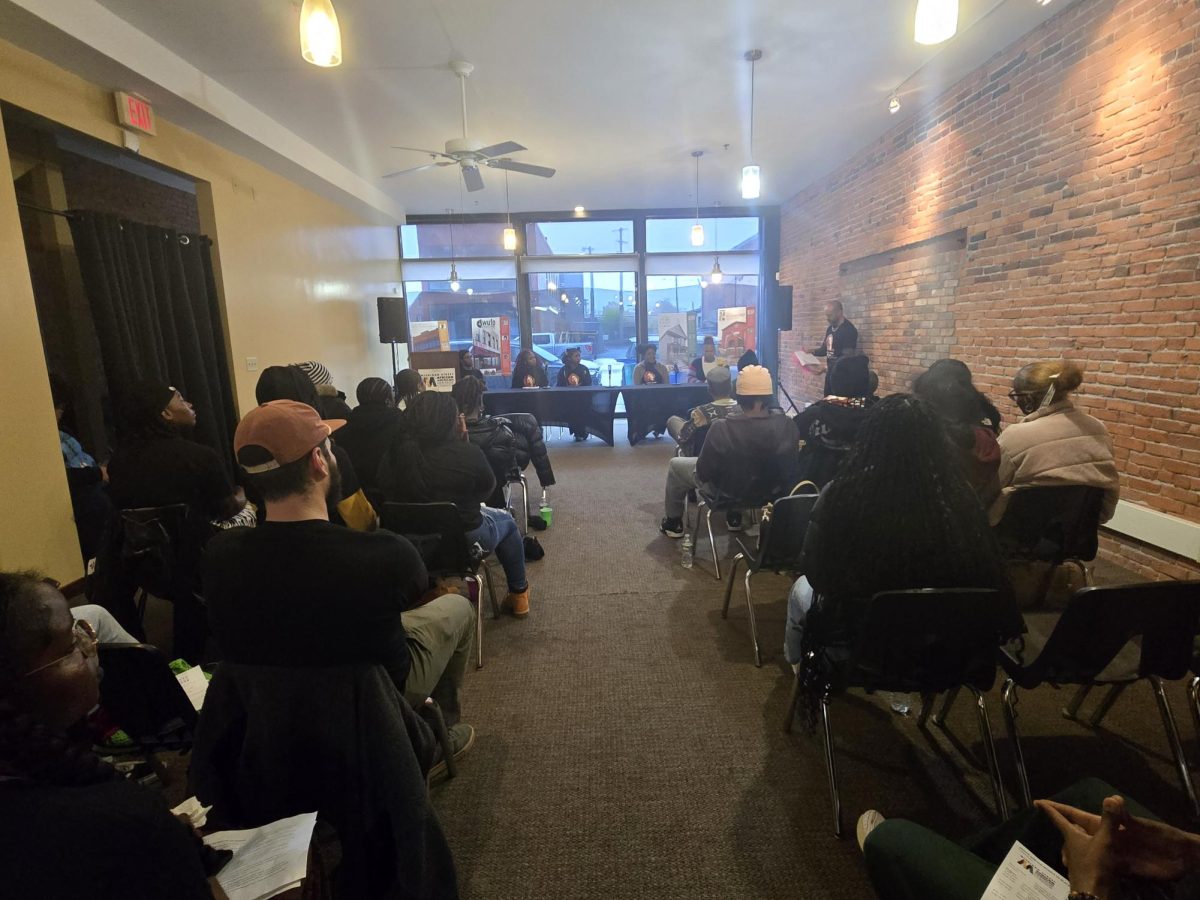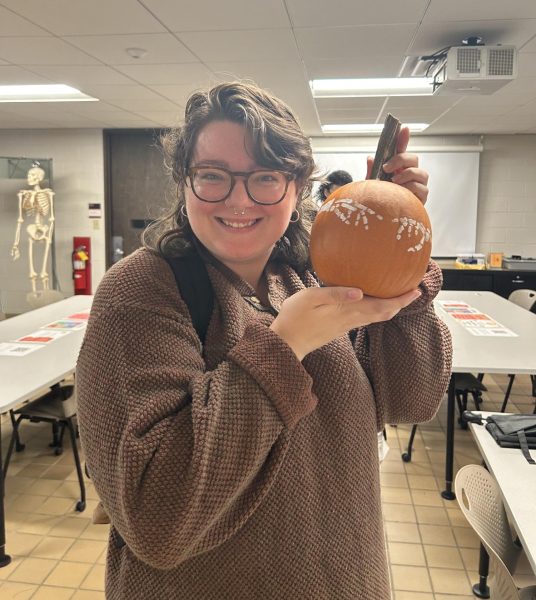Can professor-student communication be improved on campus?
April 20, 2016
A day in the life of SUNY Buffalo State professors is simple: teach class, grade papers, be available for office hours if they’re full-time, attend meetings and then finally, at the end of the day, go home.
A day in the life of students is even simpler: go to class, do homework, maybe work a part-time job or two, go home and party on the weekends.
Depending on who you are, one of those two rash generalizations may be how you perceive one of those groups.
But perhaps there’s a way to break down some of the barriers between students and professors so each respective group can see the other in a different, friendlier light.
Certainly, mutual meeting places for students and professors exist now. The Campbell Student Union food court provides plenty of space for students and professors, but it seems like professors are a rare sight to see there.
Sophomore biology major Alexa Duran said she spends a considerable amount of time in the food court but doesn’t see professors in the food court often.
“I think the Technology Building would be a good place, but not really here,” Duran said about the food court being a mutual meeting place.
“I just feel like it’s good to have your professors around,” junior criminal justice major Nicole Thomas said, “especially when you need advising on personal things.”
Duran thinks there should be a place where students and professors can go to relax and casually socialize. Full-time creative studies professor Michael Fox thinks a place like that would be nice.
“We don’t have anything that I would call the right place,” Fox said. “A coffee connection thing that’s not associated with the bookstore or any of that stuff, where a person could just relax and have coffee or tea or something like that would be nice.”
Senior psychology major Michael Brunetto said he comes to the food court often, but doesn’t see a lot of professors there. Although he isn’t sure about other majors and minors, Brunetto said the psychology department encourages students to talk to professors during their office hours, which he thinks is the best place for professors and students to convene.
“Should students have personal relationships like that with their teachers? In some instances, that could create bias in the classroom where they’re getting better grades than someone else,” Brunetto said.
Brunetto thinks having non-school related conversations with professors might not be the best idea for current students. He said if former students wanted to form those types of relationships with professors, that would be fine.
Adjunct communication professor Gabriele DiMaio said there used to be a couple of bars on campus where he would sometimes see faculty and staff when he was a student at Buffalo State.
“Yeah, not many,” DiMaio said. “It wasn’t like there were a whole bunch, but you would see a few people in the administration.”
DiMaio was a student from 1982 to 1986. As a student, DiMaio said he usually went out Thursday nights. He said there was a pub that served beer and wine located near the Student Union hallway where on-campus radio station WBNY is now stationed, a pizza place and a bar in Moot Hall, called The Oakroom, that served drinks, wings and sandwiches.
DiMaio now considers himself friends with former communication professor Tom McCray, who was DiMaio’s professor and advisor during his time as a student. He said the friendship wasn’t the result of going out and drinking with McCray, though.
“I think that my relationships always happened in the context of the work,” DiMaio said. “I understand the benefits of sort of that dynamic. I’m not sure that I think that they are mutually exclusive.
“I think the dynamic of eating chicken wings and drinking beers, I’m not sure. I think that benefits the students when they do that together, but I’m not sure if that benefits the professor-student dynamic.”
DiMaio said the dynamic of full-time and adjunct professors is different.
“My initial reaction as an adjunct is I don’t see that as an adjunct,” DiMaio said. “Only because, even if there was a bar on campus or even if there was a place like I used to have back in the day, as an adjunct, I come in, I teach and unless I have a meeting with a student, I leave. That’s a different dynamic than full-time staff and faculty in that they’re here all the time, and if they put a long day in and they say ‘You know what, I don’t feel like cooking. Let me go to Moot Hall and get a dozen wings and have a beer,’ they can do that.”
Fox said between preparation for classes, attending conferences, meetings, research, being on committees and technical advisement, full-time professors like himself don’t have much time. Although his office door is almost always open, Fox relies on his students coming to him if they want to talk.
“One of the blocks or barriers that comes to the scenario is that the smallest thing we do time-wise is actually be in the classroom,” Fox said. “The business of academia is so time consuming that pretty soon we start eating lunch in the office because we’re busy. I don’t have the time.”
DiMaio said there was also a bowling alley in the 1980s where the food court now exists. He said the food court provides more food service than back when he was a student.
“To me, that place serves the purpose of like a Moot Hall because there’s lots of sitting area, lots of space, lots of private areas there, and lots of food service places there, whereas opposed to if you went to Moot Hall, there was chicken wings, beef on weck and whatever drinks you could get,” DiMaio said.
DiMaio said he understands the desire to get to know more about a class or major outside the classroom, such as getting to know what it’s like to work in an industry that a professor may have experience in. He said mutual meeting places might help professors find out what it’s like to be a student in a more informal way.
“So, as I think about it, I can see the benefit of having that sort of interaction,” DiMaio said. “I guess what I’m hard-pressed to see is whether or not there are places like that. It’s my impression that those places exist now.”
DiMaio thinks the dynamic of what the pub was like can be achieved now. He said the accessibility of professors can work just as well over a cup of coffee.
Fox thinks the opportunity for that type of professor-student interaction is present.
“There is an opportunity and a barrier at the same time with that,” Fox said. “The opportunity is that if there was a place that was real handy, that offers the potential. The barrier is the environment that is conduced into that, and that is not just on the part of the faculty member who has all of this stuff that we have to do besides tea. But I’ve noticed that over the years, there are fewer and fewer students that are willing to engage. It’s like they’re going into a machine and they don’t know what to do.”
Fox said that because of modern technology like cell phones, he believes there is a social barrier that would “hinder the successful implementation of a place.” He said a press issue with the Buffalo State faculty has been that students seem to be less well prepared for individual socialization.
He thinks students are less prepared for college and less interested in person-to-person communication. As of now, Fox usually meets with students in an available creative studies conference room.
When DiMaio was a student, the drinking age was 18. He said alcohol isn’t necessarily a recipe for disaster, but it is a recipe for not maintaining a professional distance that professors and students need. He said it used to be a rule of thumb that professors should keep a professional distance from students, but that has become more codified over time.
“The 80s were a very different time,” DiMaio said. “The number one movies when I went to school were ‘Arthur’ and ‘Animal House.’ Both movies celebrated irresponsible consumption of alcohol. We are in a very different society and I think, for the better, we are more mindful of that fact that, alcohol, while being a social lubricant, I’m not sure that any good that comes from students and professors drinking together is outweighed by the potential of familiarity. As much as I like my students, I think that there definitely should be an arm’s distance between students and faculty.”
email: koster.record@outlook.com



